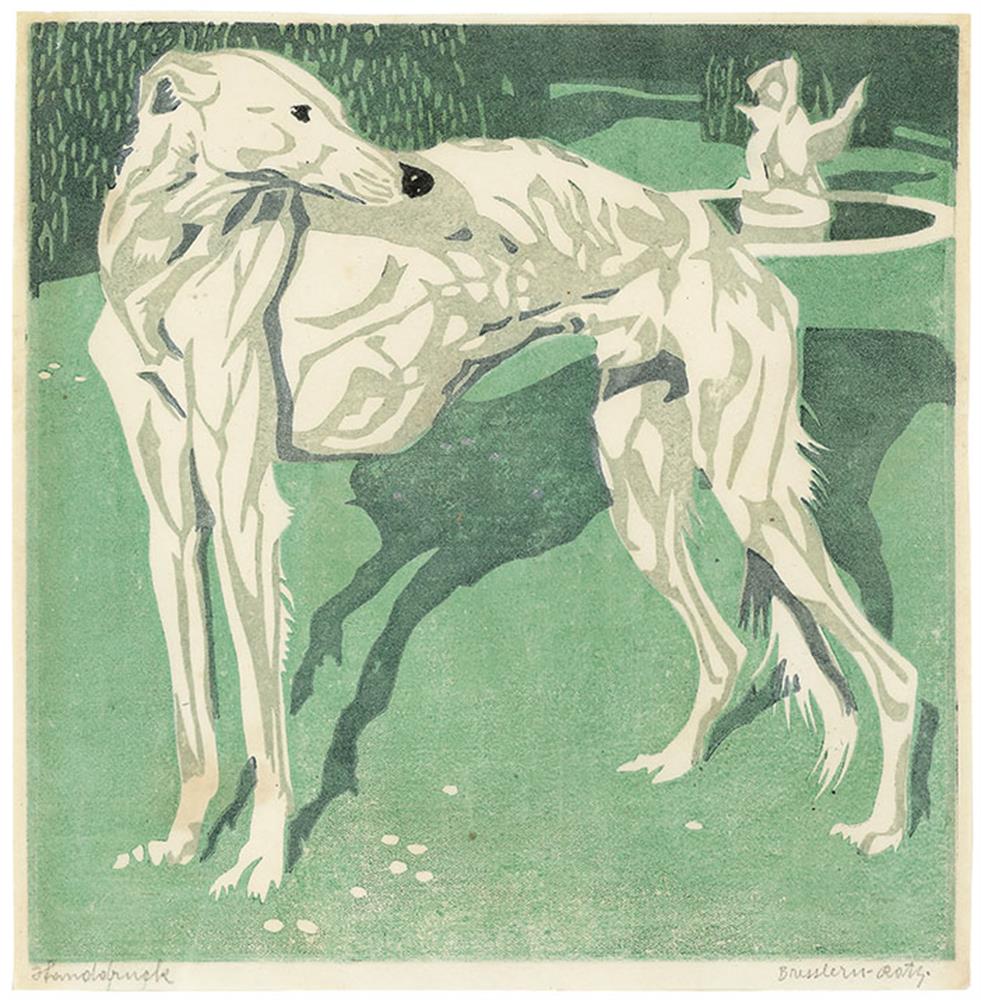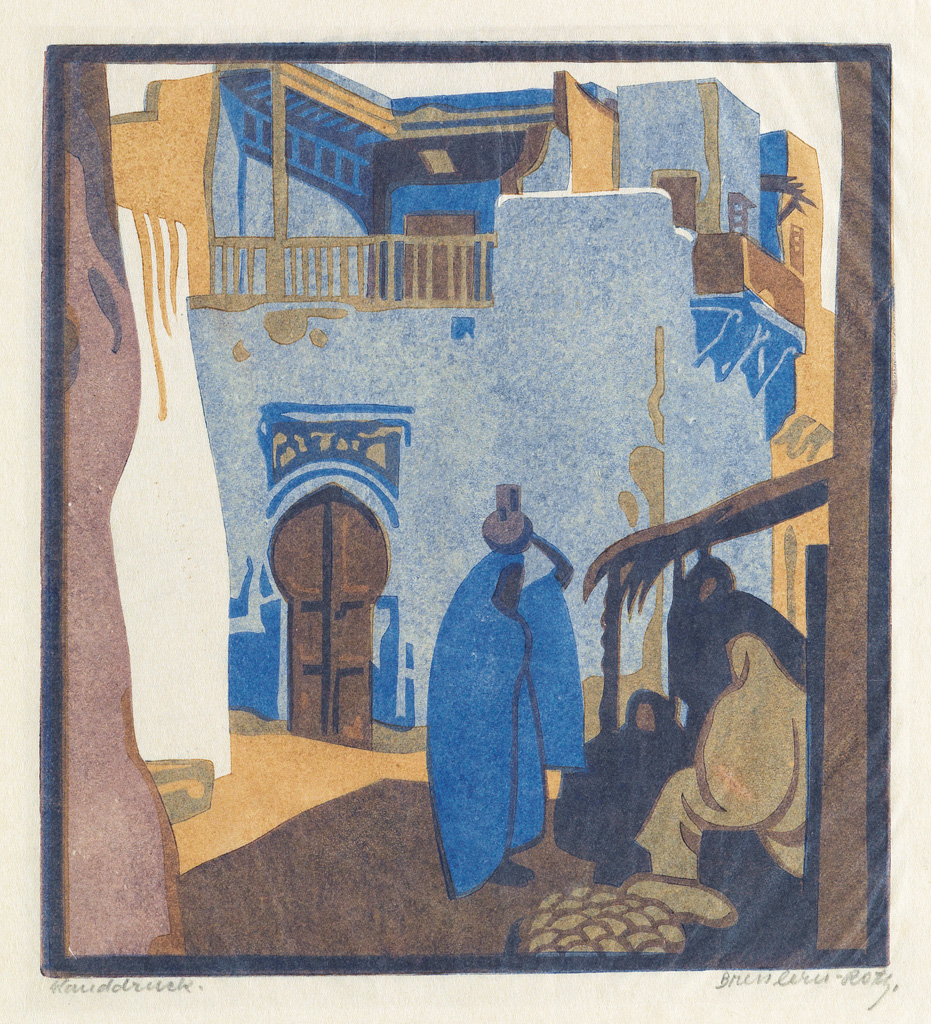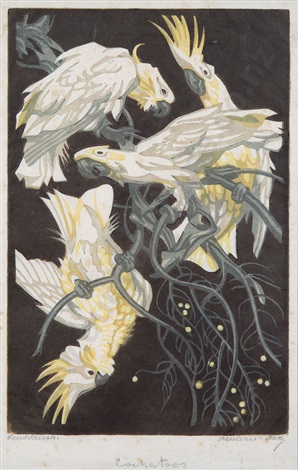Canine Companions: Famous Artists and Their Beloved Dogs
There’s nothing like the bond between a passionate creator and their loyal four-legged friend. Let’s explore the heartwarming...
Jimena Aullet 10 February 2025
Always moving, impenetrable, and ephemeral, animals are among the most difficult subjects for an artist to depict. Using a new style of printmaking as well as her deep love for nature, Norbertine Bresslern-Roth created unforgettable portrayals of animals that seem to jump out of their frames.

Norbertine Bresslern-Roth, Self-Portrait, 1923, Neue Galerie Graz, Graz, Austria. The Universalmuseum Joanneum.
Bresslern-Roth was born in 1891 in Graz, Austria. She was raised by her mother and aunt in a household of little means. As a young girl, she was curious about the natural world and enjoyed observing animals and keeping them as pets. At school, her teachers quickly noticed her artistic promise.

Norbertine Bresslern-Roth, Angora Cat, 1920, private collection. Day Gallery.

Norbertine Bresslern-Roth, Flamingos, 1927, private collection. Swann Galleries.
Bresslern-Roth soon began lessons with the painter Alfred von Schrötter, who taught her for free. Many of her artistic opportunities arose from this apprenticeship. In a time when women were still banned from Austria’s art schools, Schrötter’s belief in Bresslern-Roth opened many doors for the young artist. In the early 1910s, she accompanied him to a summer artists’ colony in Dachau. He also submitted her work to exhibitions and publications.

Norbertine Bresslern-Roth, Chamaeleons, 1924, private collection. Galerie Kovacek & Zetter.
Most importantly, Schrötter introduced Bresslern-Roth to Ferdinand Schmutzer. This artist and teacher is primarily known today for his photography. Schmutzer taught at the Viennese academy and took Bresslern-Roth on as a private student (the academy wasn’t open to women until 1921). Like Schrötter, he also didn’t charge her tuition.

Norbertine Bresslern-Roth, Borzoi, 1922, private collection. Galerie bei der Albertina – Zetter.

Norbertine Bresslern-Roth, Blue House, 1928, private collection. Swann Galleries.

Norbertine Bresslern-Roth, Snowy Owl, 1941, private collection. MutualArt.
Bresslern-Roth studied in Vienna for six years before returning to Graz. Her period in the capital city overlapped with the Vienna Secession, the modernist movement that shaped the turn-of-the-century Austria. Bresslern-Roth exhibited with members of the Secession movement before leaving Vienna. Furthermore, she continued to be interested in animals and made frequent trips to the Vienna zoo, during which she make preparatory sketches.

Norbertine Bresslern-Roth, Zebra, 1919, private collection. Galerie Kovacek & Zetter.

Norbertine Bresslern-Roth, Youth, 1930, private collection. Artnet.
Back in Graz, Bresslern-Roth married Georg von Bresslern and began to work with a group known as the Freiland artists association. One of its leaders was Fritz Silberbauer, who was an active member of the Graz Secession. Like Bresslern-Roth, Silberbauer had been a student of Alfred von Schrötter and Ferdinand Schmutzer. Though the Graz Secession barred women from joining officially, female artists could become members and exhibit with the group.

Norbertine Bresslern-Roth, Guianan toucanet, 1928, private collection. Galerie Kovacek & Zetter.

Norbertine Bresslern-Roth, Cockatoos, 1921, Dunbar Sloane, Wellington, New Zeland. Mariette Prints.
The artist worked in several mediums but her specialty was linoleum cuts (linocuts). To make a linocut, an artist carves a relief image into a piece of linoleum, then prints the reversed image onto paper or fabric. This technique, based on woodcutting, benefits from the more malleable nature of linoleum. Often aided by her husband, Bresslern-Roth mastered the medium just as it was becoming popular and soon became one of its most prominent practitioners.

Norbertine Bresslern-Roth, Fight (Lobster and Squid), 1923- 1924, Schmidt Fine Art Auctions Dresden, Dresden, Germany. MutualArt.

Norbertine Bresslern-Roth, Axis deer, 1922, Galerie bei der Albertina – Zetter, Vienna, Austria. Gallery’s Website.
Bresslern-Roth was a prolific printmaker and her works were soon in demand not just in Austria, but Europe and North America as well. Her style drew from the Viennese Secession, traditional Japanese printmaking, and the decorative arts, and also benefited from her travels around Europe and northern Africa. Animals were her primary subject, from the domestic to the savage, often depicted in motion.

Norbertine Bresslern-Roth, The Lion, 1928, private collection. The Annex Galleries.

Norbertine Bresslern-Roth, Pug, 1926, Galerie Kovacek & Zetter, Vienna, Austria. MutualArt.
She exhibited widely in Graz and other Austrian cities, and also worked commercially, illustrating books or producing commissions. During the Second World War, she was not active politically, as she was categorized as “half Jewish” due to her husband’s background. The Bresslern-Roths survived the war period and the post-war economic hardship in Austria by illustrating children’s books.

Norbertine Bresslern-Roth, The Frog King or the Iron Heinrich, 1915, private collection, Vienna, Austria. Galerie Kovacek & Zetter.
Bresslern-Roth died in 1978. She left behind work that challenged the boundaries of graphic art and printmaking and argued for the relevance of animals as a compelling artistic subject.

H. Lipsky, Bresslern-Roth working, GrazMuseum.
Monika Holzer-Kernbichler: Norbertine Bresslern-Roth: Animal Painter, Exhibition Catalogue, Neue Galerie, Graz, Austria, 2016.
DailyArt Magazine needs your support. Every contribution, however big or small, is very valuable for our future. Thanks to it, we will be able to sustain and grow the Magazine. Thank you for your help!